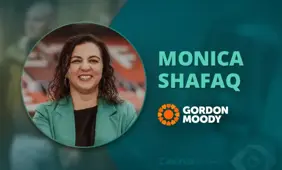Intralot's Sports Bet Ohio Betting Kiosks to End 'Failed' 2-Year Run
Intralot's Sports Bet Ohio brand will cease operations in the state's Type-C sports betting kiosk market by June 22, marking the end of what has been widely regarded as a failed experiment. The Ohio Lottery confirmed that Intralot, the largest provider of these kiosks, will pull out of the market entirely. This exit will take 656 kiosks offline, accounting for 93% of all active locations offering sports betting kiosks across Ohio.

The decision comes after more than two years of underwhelming performance for the Type-C betting model, which launched alongside retail and online sports betting on January 1, 2023. Initially rolled out at 772 locations throughout the state, these kiosks were primarily installed in bars, taverns, restaurants, and similar venues.
Related: New Online Casino Legalization Effort in Ohio Could Appear SoonAt their peak, there were 940 kiosk locations. However, they quickly failed to meet expectations due to limited betting options, low maximum bet amounts, and an inability to compete with the more versatile and accessible online sportsbooks.
The disparity between online and kiosk betting performance became evident early. While January 2024 marked the highest monthly gross gaming revenue for kiosks at $207,315, online sportsbooks reported $111.1 million during the same month, as recorded by the Ohio Casino Control Commission. Over the entire year of 2023, kiosk betting generated a little over $30 million in wagers, while online betting amassed over $17 billion, according to data shared by the Ohio Lottery.
With Intralot's departure, only a small number of kiosk operations will remain in the state under UBETOhio, which continues to serve 48 locations. The third original provider, BetSkyBox, left the market on July 16, 2024.
UBETOhio's CEO, Andy Westmeyer, indicated that despite the poor performance of kiosk betting relative to projections, the company intends to continue operations as long as feasible. Prior to legalization, analysts working with UBETOhio had forecast that retail sports betting might account for 2% to 5% of Ohio's total market. In reality, it has made up less than 0.2%.
More Business News
 Business
Business
Betsson Rejects Dutch iGaming Market Return amid Regulatory, Government Challenges
Jun 05, 2025Betting Kiosks Miss the Mark
The minimal market share and tepid consumer interest have led state officials and stakeholders to publicly question the viability of the Type-C betting model. During a recent legislative hearing related to iGaming, Senator Nathan Manning stated that the sports betting kiosk system had proven to be a complete failure. His assessment aligned with the frustrations expressed by several bar and restaurant owners who had originally hoped that these kiosks would generate significant revenue or at least draw more foot traffic to their establishments.
According to Andrew Herf, executive director of the Ohio Bar Owners Association, the failure of the kiosks was almost inevitable. He observed that once mobile sports betting became available, the kiosks had little chance of retaining interest.
Herf explained that the value proposition of keeping patrons engaged in the venue while they waited for the outcomes of their bets never materialized. Consumers preferred the convenience of mobile apps, which allowed them to bet and leave, rather than remain on-site for extended periods.
With Intralot's exit, Ohio's once-hopeful experiment with Type-C sports betting kiosks will be largely dismantled, leaving only a fraction of the original network active. The remaining installations operated by UBETOhio represent the final presence of this model in the state.
RELATED TOPICS: Business
Most Read
PAGCOR Board Members Submit Courtesy Resignations Following Presidential Directive
May 30, 2025Must Read
 Interviews
Interviews
Sweepstakes Casinos: Thriving in an Ever-Changing Industry – Interview with Attorney Stephen C. Piepgrass
Feb 17, 2025 Interviews
Interviews







Review this New Post
Leave a Comment
User Comments
Comments for Intralot's Sports Bet Ohio Betting Kiosks to End 'Failed' 2-Year Run